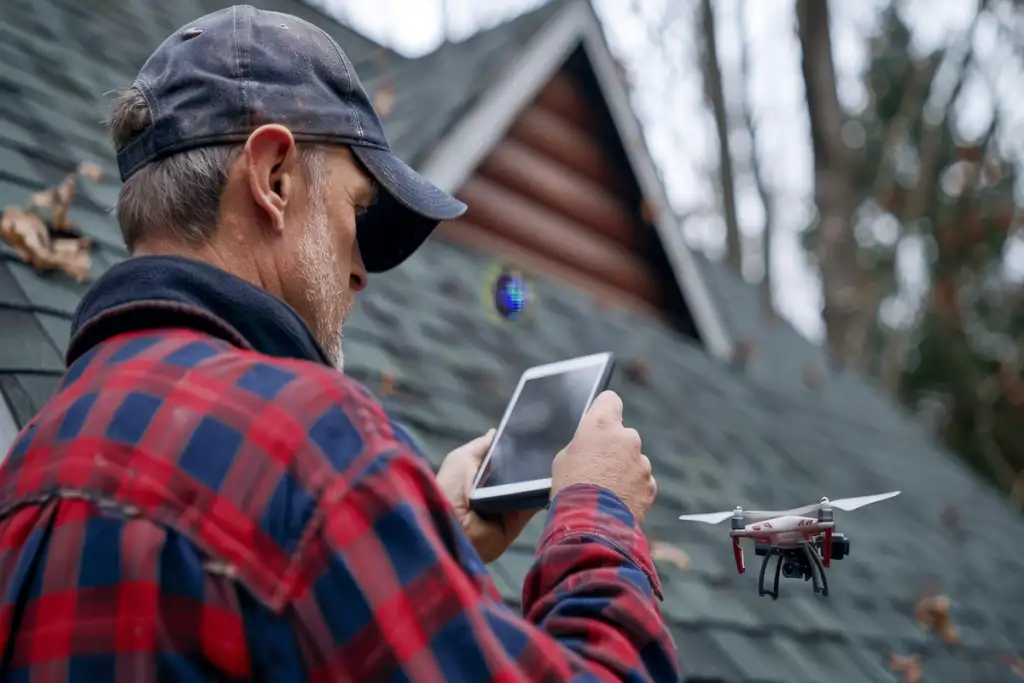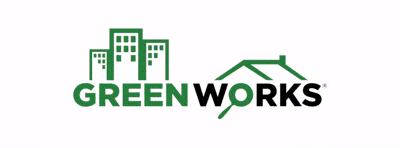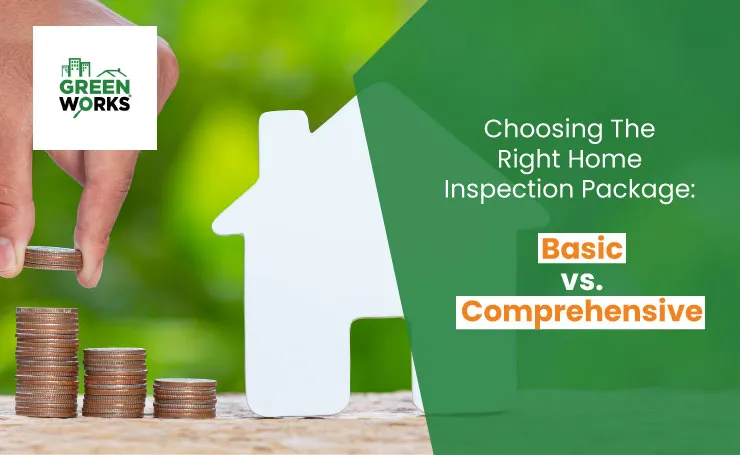Posts
The Ultimate Guide to Drone Roof Inspections
A weekend storm has brought intense weather. You suspect roof damage, but the prospect of inspecting your roof by climbing a rickety ladder fails to appeal to you. But the inspection is important too. What do you do now? Fortunately, there’s a way out of this conundrum.
Enter the modern hero of home maintenance: the drone inspection.
Smart technology enables you to view roofs in detail and clarity from the ground up without physically climbing or walking on your roof. In this guide, we’ll break down everything you need to know about roof inspection with drone technology, why it’s revolutionizing the industry, and how it can save you time, money, and stress.

What Is A Drone Inspection
A drone inspection uses unmanned aerial vehicles (UAVs) equipped with high-resolution cameras to safely and accurately capture images or videos of your roof. The drone gathers data while flying over your property, and experienced analysts detect roof damage, signs of wear, and potential problems.
Such roof examinations substitute conventional inspection without physically going up the roof, walking over it, and inspecting it.
Why Choose A Roof Inspection With a Drone
Standard roof inspections necessitate workers using ladders and harnesses and exposing themselves to significant risks. On the other hand, a roof inspection with a drone offers:
Safety First
A drone inspection eliminates all dangerous climbing scenarios and crawling tasks and prevents injuries. This contactless method operates perfectly on steep surfaces, slippery materials, or aging roofs.
High Accuracy
A drone system produces detailed photographs that reveal minor cracks and missing shingles. The devices come with thermal imaging technology to discover moisture problems and insulation deficiencies.
Time Efficiency
A drone-operated roof inspection typically finishes within a time frame of 15 to 30 minutes. It will not require you to dedicate your entire day to it.
Cost Savings
Due to fewer human labor hours combined with quicker inspections, the overall costs of this endeavor remain lower. Early detection of damage through drones allows you to prevent expensive maintenance costs.
When Should You Get A Drone Roof Inspection
Here are some common scenarios where a drone inspection makes perfect sense:
- After a heavy storm or hail.
- Drone roof inspections come in handy during home purchases or sales.
- For annual roof maintenance.
- When planning solar panel installation.
- For checking on ceiling leaks or water stains
Drones reveal potential roofing issues that remain invisible to the human eye from the ground.
Real Stats, Real Impact
According to a report by MarketsandMarkets, the global drone inspection market is projected to grow from $11.6 billion in 2022 to $23.0 billion by 2027 at a CAGR of 14.6%. The increasing numbers show that drones are developing into the standard inspection method for residential and commercial properties.
The drone tech provides 99.4% accurate results to detect roof issues beyond traditional visual assessments.
What A Drone Inspection Covers
Drone roof inspections usually consist of these elements
- High-resolution photos of the roof surface.
- Drone cameras take detailed images of roofing shingles, flashing components, and external vent elements from a distance.
- The inspection focuses on discovering roof damage, like cracks, puncture holes, and missing material pieces.
- Gutter and chimney assessments.
- Thermal scans can also be performed, as an option, to search for leaks and heating issues in buildings.
The gathered information is converted into an easy-to-comprehend document containing recommendations that serve well for insurance claims, plus contractor quotes.
How It Works – Step by Step
Curious about how a drone inspection actually happens? Here’s a quick look:
Appointment Is Scheduled
The inspection company fixes an appointment time and verifies drone-safe weather factors before drone operation.
Pre-Flight Checklist
The drone operator conducts a basic equipment check and examines batteries before designing the flight path.
Flight And Data Capture
High-resolution images, which might include video and thermal scans, emerge from the drone as it lofts overhead the roof.
Image Analysis
After image examination, technicians create reports with identified problematic areas.
Report Delivered
The digital report contains pictures, analysis results, and professional recommendations.
The entire examination process requires less than one hour to accomplish.
Detection of these signs at an early stage provides the opportunity to prevent major complications, which could lead to expensive problems.
Are Drone Inspections Legal And Safe
Drones serve a useful purpose in inspections, provided qualified professionals execute them. Drone operators in the United States must comply with FAA Part 107 regulations, as these rules define airspace boundaries and privacy regulations.
Professional inspections depend on hiring companies with substantial experience, valid operating licenses, and insurance policies.
Final Thoughts
A roof that stays hidden from view must not remain forgotten. A drone inspection offers a safer, faster, and smarter way to protect your home. Drones enable thorough views of properties without difficulties.
This modern roof inspection method makes all traditional methods using ladders, binoculars, harnesses, and ropes obsolete.
An innovative drone inspection service allows you to view your roof from a perspective that will amaze you.
GreenWorks Inspections and Engineering offers cutting-edge drone inspection services that are fast, affordable, and incredibly detailed. Our company’s certified professionals assess roof conditions by flying drones, providing precise details about the roof’s health without physically accessing the rooftop.
Contact us right now for drone roof inspections that help you avoid roof difficulties before they occur.



